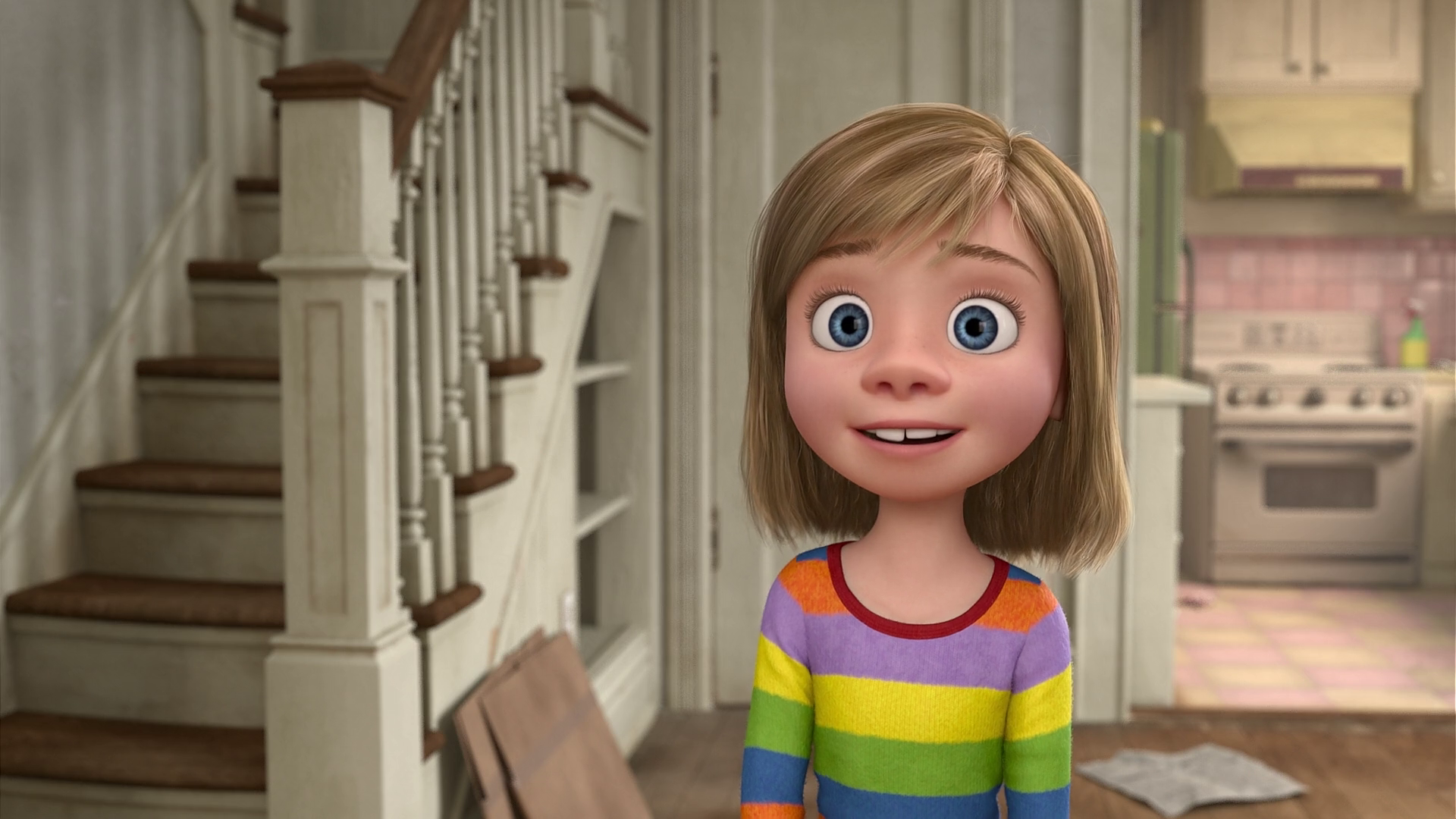Adaptiviteit en onze persoonlijkheid
© Disney/Pixar
Adaptiviteit, onze persoonlijkheid en ons brein: 3 essentiële elementen om vlotjes door deze veranderende omgeving te navigeren.
Waarom lukt het één persoon wel en een ander persoon niet om zich vlot aan te passen aan veranderingen? Waarom lukt het mij dan wel en op andere momenten niet? Bizar, en om dit te begrijpen is het nodig even de neurowetenschap er bij te halen. Saai, denk je? Dankzij Disney hoeft dit niet zo te zijn.
De Disney film Inside Out is veel meer dan een comedy met een happy end. Vele kinderen hebben flink gelachen met deze film maar er zit veel meer in: het is een film met een diepgaande neurologische betekenis omtrent onze adaptiviteit.
Deze film, een absolute aanrader om met het gezin te bekijken tijdens deze Paaspauze, hanteert de meest moderne neurobiologische kijk op de mens en neemt ons mee naar wat er afspeelt in de hersenen van Riley, een pubermeid die zich moeilijk kan aanpassen aan de verhuis van haar ouders van Minnesota naar San Francisco.
Riley wordt afgebeeld als een persoontje dat bestuurd wordt door een verzameling tegenstrijdige biochemische mechanismen, belichaamd door leuke stripfiguurtjes: de gele, vrolijke Plezier, de blauwe, sombere Verdriet, de rode heetgebakerde Woede,… Deze personages regelen al Rileys stemmingen, beslissingen en handelingen vanuit het Hoofdkwartier in haar brein. Vanachter een groot scherm worden al haar handelingen nauwkeurig gevolgd.
Rileys onvermogen om zich aan te passen aan haar nieuwe leven in San Francisco is het gevolg van een onbalans in haar brein, een innerlijke strijd op het Hoofdkwartier. Het grote moment van onthulling komt ook niet als Riley haar eigen authentieke zelf ontdekt (waar het toch vaak om draait bij Disney films) maar juist als duidelijk wordt dat Riley niet vereenzelvigd kan worden met één duidelijke kern en dat haar welzijn afhangt van de interactie tussen allerlei verschillende mechanismen. Riley ontdekt dat zij niet Plezier is, of Verdriet, of één van de andere personages, maar dat ze een complex verhaal is dat ontstaat uit de conflicten en samenwerkingsverbanden van alle biochemische personages bij elkaar.
Dit zijn wijze lessen voor ons: ons gedrag is niet eenvoudig uit te drukken of, laat staan, te voorspellen. Zelfkennis is daarom cruciaal om in veranderende omstandigheden vlotjes te navigeren. Ben jij eerder een animator type, zoekend naar beweging of eerder een beheerder, strevend naar een maximale veiligheid. Dit zal zeker een impact hebben op je houding tegenover veranderingen. Daarnaast speelt ons stress management een fundamentele rol, en dit voor iedereen! In rustige omstandigheden werken de verschillende personages in ons Hoofdkwartier vlot samen doch als er iets belangrijk verandert in ons leven dan wordt deze biochemische balans helemaal overhoop gehaald. Onze controlekamer verliest de controle en oude delen van ons brein spelen op. Zo kan plots één personage overheersen en herkennen we onszelf vaak niet meer terug.
Kennis van onze persoonlijkheid (welke drivers, welke temperamenten sturen ons gedrag?) en kennis van ons brein (hoe kan ik mijn executieve functies beschermen en versterken, welke stresshanteringstechnieken passen best bij mij) zijn cruciale fundamenten van adaptiviteit. Wil je hierover meer te weten komen: hierbij de link naar onze whitepaper “Ons brein, een vloek of een zegen”.
Werken aan onze adaptiviteit, aan het verhogen van ons AQ, vertrekt vanuit dit neurocognitief basisinzicht en technieken om hiermee concreet aan de slag te gaan vind je bijvoorbeeld in hoofdstukken Energie en Balans. Maar ook de andere thema’s, zoals Essentialisme, Focus en Groei Mindset zullen bijdragen tot meer rust in ons brein, tot meer overzicht en sereniteit in ons Hoofdkwartier.
Inspiratie: 21 lessen voor de 21e eeuw (Yuval Noah Harari)
Adaptability, our personality and our brain: 3 essential elements to smoothly navigate in this changing environment.
Why does one person adapts smoothly and another person fails to adapt to changes? Why do I succeed and at other times I don’t? Weird, no, and in order to understand this it is necessary to bring in neuroscience. Boring, do you think? Thanks to Disney, this doesn't have to be the case.
The Disney movie Inside Out is much more than a comedy with a happy ending. Many children enjoyed this film a lot, but there is much more to it: it is a film with profound neurological significance about our adaptability.
An absolute must to watch with the family during this Easter break, this film takes the most modern neurobiological view of the human race and takes us to what goes on in the brain of Riley, an adolescent girl who finds it difficult to adapt to the move her parents made from Minnesota to San Francisco.
Riley is portrayed as a person controlled by a collection of contradictory biochemical mechanisms, embodied by cute cartoon characters: the yellow happy Pleasure, the blue gloomy Sadness, the red hot-tempered Fury, ... These characters all control Riley's moods, decisions and actions from the Headquarters in her brain. All her actions are closely followed from behind a large screen.
Riley's inability to adjust to her new life in San Francisco is the result of an imbalance in her brain, an inner battle at Headquarters. The big moment of unveiling in the film is not when Riley discovers her own authentic self (which is often the case with Disney films) but precisely when it becomes clear that Riley cannot be identified with one clear core and that her well-being depends on the interaction between all kinds of different mechanisms. Riley discovers that she is not Pleasure, or Sadness, or any of the other characters, but that she is a complex story that arises from the conflicts and collaborations of all the biochemical characters together.
These are very wise lessons for us: our behavior is not easy to express or, let alone predict. Self-knowledge is therefore crucial to smoothly navigate in changing circumstances. Are you more of an animator type, looking for movement or rather a controller, striving for amaximum of safety? This will certainly have an impact on your attitude towards change. In addition, our stress management skills play a fundamental role, and this for everyone! In calm circumstances, the different characters in our Headquarters work smoothly together, but if something important changes in our lives, this biochemical balance is completely upset. Our control room is “losing control” and old parts of our brain are playing up. Suddenly one character can dominate and we often no longer recognize ourselves.
Knowledge of our personality (which drivers, which temperaments determine our behavior?) and knowledge of our brain (how can I protect and strengthen my executive functions? which stress management techniques suit me best?) are crucial foundations of adaptivity. If you want to learn more about this: here is the link to our whitepaper whitepaper “Ons brein, een vloek of een zegen” (dutch)
Working on our adaptivity, increasing our AQ, starts from this neurocognitive basic insight and techniques to get started with this can be found, for example, in the chapters on Energy and Balance. But also the other themes, such as Essentialism, Focus and Growth Mindset, will contribute to more peace in our brain, to more overview and serenity in our Headquarters.
Inspiration: 21 lessons for the 21th century (Yuval Noah Harari)

